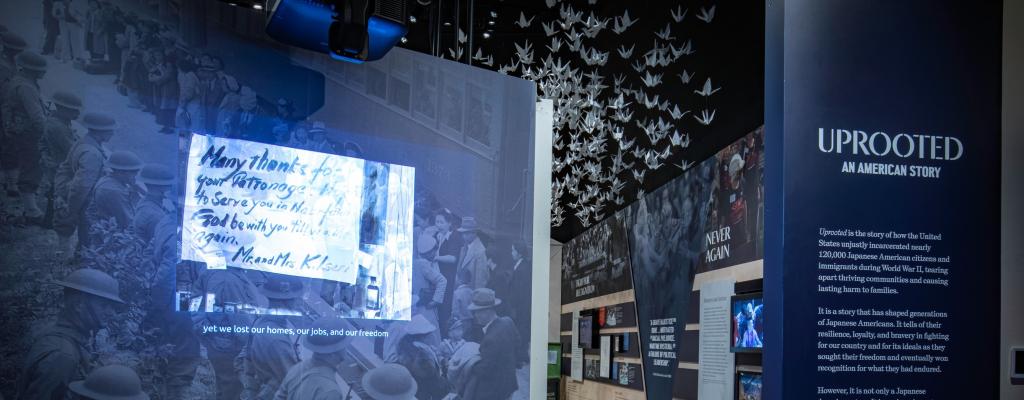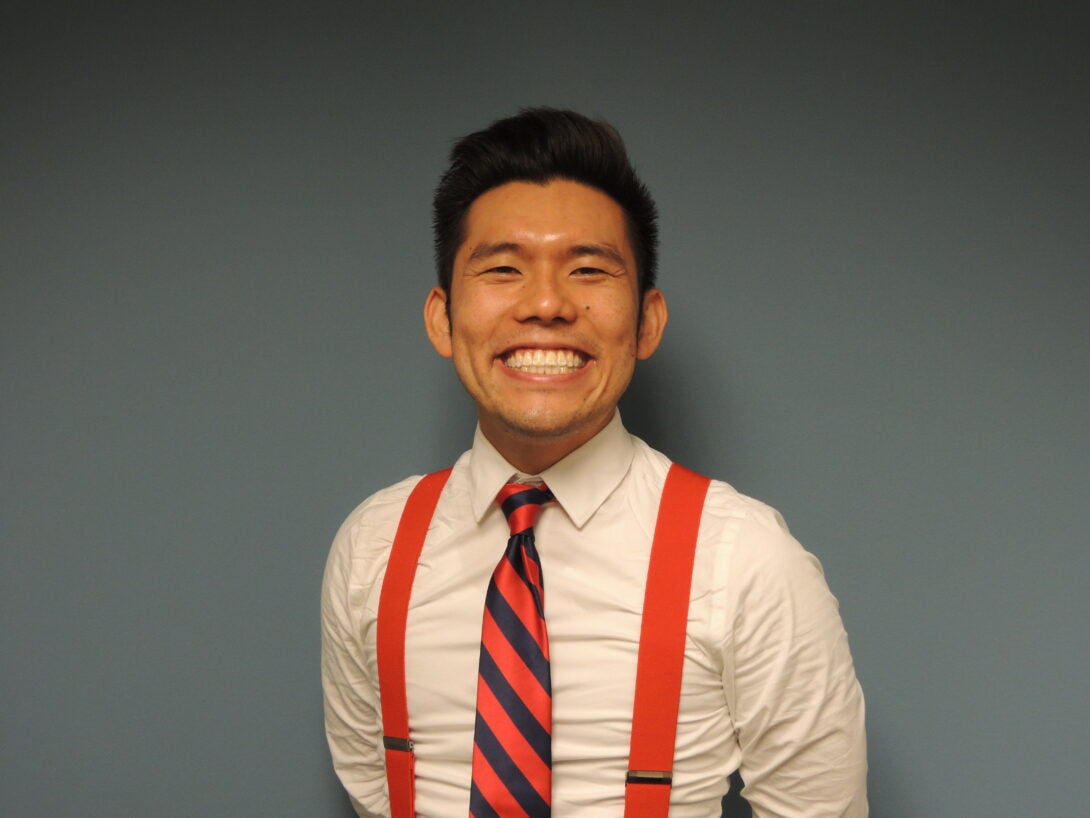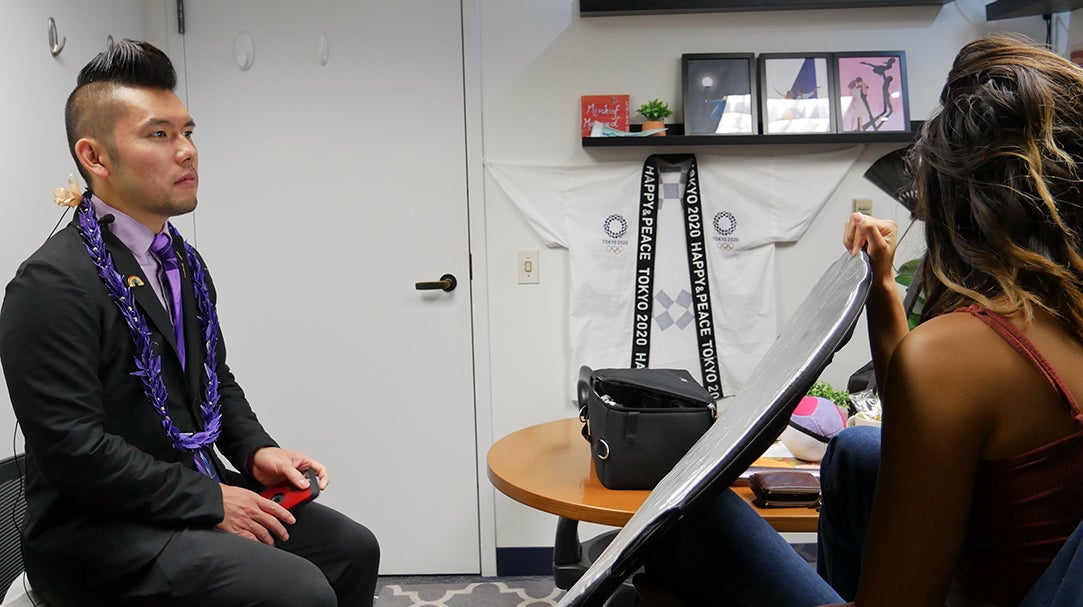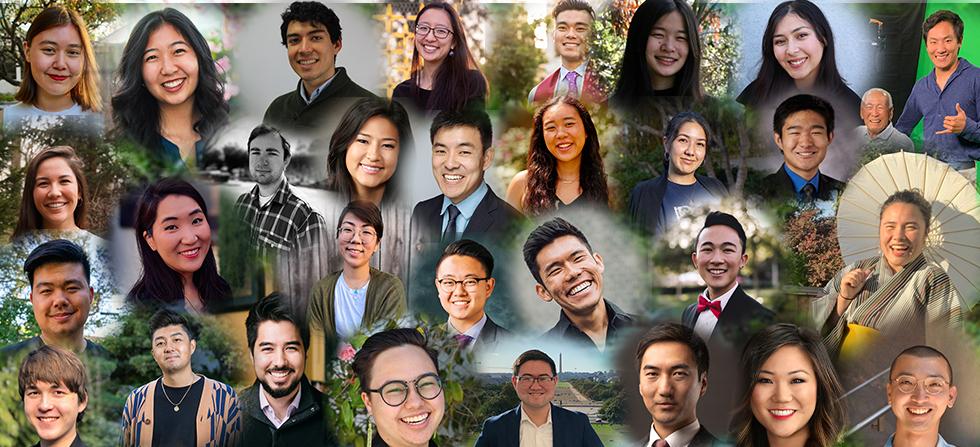Uprooted!: Brandon Ishikata Regarding Features and Honors with the Museum of California and the Japanese American National Museum
By Christian Rodriguez-Hernandez
An interview with Brandon Ishikata, an Honors College Academic Advisor and course instructor, who will be in an upcoming exhibit with the Museum of California and is listed as one of the Japanese American National Museum’s 30 Changemakers Under 30.
The California Museum features the Uprooted! exhibit about Japanese Americans during WWII, and, after renovations, will include a new documentary including interviews from modern Japanese Americans, Brandon Ishikata included. Out of over 100 nominations, Brandon Ishikata was among those chosen for Japanese American National Museum’s 30th anniversary. The 30 Changemakers Under 30 list serves to honor notable people in the community who uphold the museum’s values.

Q: You’re to be featured in the Uprooted! Exhibit at the Museum of California. How did you get involved with this project?
A: I am a member of what’s called the Japanese American Citizens League (JACL), and that is the largest civil rights organization dedicated towards promoting API, specifically within the Japanese-American communities. A lot of the JCL historically has been on the forefront of a lot of civil rights issues, whether it’s been about legalizing gay marriage or showing solidarity for Muslim Americans. As a member of a couple different chapters of JCL, there was a call that a nationwide search was looking for people around 18 to 35 to be interviewed for a documentary.
Uprooted! is a signature exhibit of the California museum, which is the state museum of California, and they were looking to update the museum’s exhibition specifically for that one and have a documentary about those who are descendants of those incarcerated and seeing where they’re at today.
Q: Through the decades, many of these Japanese immigrants, had to repress their culture and assimilate into society. How do you feel that those actions affect their children, the Japanese-Americans of today?
A: Yeah, I think it’s very interesting talking about what it means to be American. What was happening during World War Two, when Japan bombed Pearl Harbor in Hawai’i, the government was saying that anyone who looks like he was of Japanese descent is considered the enemy. What the government decided was that if you ever have any Japanese ancestry, you’re going to be in what’s called an incarceration camp, and these camps weren’t like the summer camp ones. These were some pretty harsh conditions.
I think about having conversations with my grandma, who actually fled the incarceration camp because she was a college student studying nursing. Before she died, I asked her, “Do you identify as Japanese?” and she said, “No, I do not. Because it was either my culture or my freedom, so I picked my freedom.” I think nowadays what’s interesting is that how this affects this generation is understanding what does it mean to be American. What constitutes being American, but also how can we celebrate our ethnic identity? As we talked about in my class, I think [that] being the authentic self is really important, but how can we celebrate that in a day and age where we have so much history that has a lot of scars in American history and my culture and my population.

Q: Now, on a more personal level: Do you feel that you have had a separation from your ancestral heritage?
A: I would say yes and no. I’m actually a fourth generation Japanese American, which is considered Yonsei, so I’m actually full Japanese, which is actually pretty rare nowadays. My parents were born in the United States, my grandparents were born in the United States, and then my great-grandparents were from Japan. For me, what’s interesting is that when you have generations go on, there tends to be a loss of culture. I unfortunately don’t have the language, but I have the cooking! I have the cooking.
I would say on my mom’s side, it’s really interesting because my grandma was somebody who didn’t really want to talk about it. I think that a lot of people on her side, didn’t want to talk about it because they felt ashamed. And if you don’t talk about it, then how can the story be passed on? I would say specifically from my dad’s side, as my grandfather was incarcerated, what was nice about that is I had a grandmother and grandfather who celebrated Japanese values. I would say they were more Japanese than my mom’s side, who’s very Americanized. I think understanding that, I would say yes, no, depending on what side of the family we’re talking about, but I do find this sense of pride. That’s why if you ever noticed my business cards, if you notice my signatures, I always put Morio. I always try to incorporate my Japanese heritage into the conversation.

Q: Similar to your mother’s side feeling Americanized. Do you have any comments for people who also feel that they’ve lost a lot of their culture?
A: Yeah, I think that kind of relates to being in college: taking the initiative, if you have this interest to explore in college, like my mom. She went to San Francisco State, which is kind of what’s considered the birthplace of ethnic studies. Because she didn’t learn it from her mom, she actually took Asian American Studies classes. She took a job about identity classes. I always encourage students when they’re looking at majors and finding their interests: take some ethnic studies class, take something that you don’t have to major enough, but there might be something that kind of sparks your interest because, I think for me, my mom and dad have been very prevalent about making sure that the story is passed on to me, so that I can pass it on. But I think also it’s coming down to finding you. Your family can only do so much, but it’s also kind of on us to look upon the next step, whether it’s a college class, maybe it’s reading a book or even finding a YouTube video that is actually credible.

Q: What does it mean to you to be recognized as one of the 30 Under 30 Changemakers?
A: First of all, I was highly flattered because it’s practically like the Forbes magazine equivalent for the Japanese American National Museum, which is located in Little Tokyo. And for me, when I think about that, it just motivates me more to make that positive change because there are 30 Japanese American identified individuals that are recognized across the United States, and we all come from different fields. I actually was lucky enough to be honored in two different categories: one for education, one for the arts. And I would say, for me, being a gay Japanese American male dancer and educator, in the 1940s that would not have been a thing. I think nowadays in 2022 because of the ancestors, the people who came before me, I can actually celebrate who I truly am. And I think if I were in the 1940s with these identities, I’d be very curious to see how I’d be treated, to be honest.
Q: Now, this award is for people 30 years old and younger. What do you feel is significant about winning the award at such a young age overall?
A: I think for me, one of the biggest roles is that it really is a humbling experience to remind us that the work doesn’t stop. I think, I know it sounds cliché, but it’s just the beginning. I would say that being someone who identifies as a millennial, I bring a different perspective. I feel like a lot of times with millennials, from Baby Boomers or older generations, they follow stereotypes, and I think that this is my opportunity to have that seat at the table and explain that this is a stereotype that you have of me as a millennial. But I think I defied those stereotypes. When I think about my role as an educator and artist, I have that lens, and I’m of that age where I was born before social media came out. I was born before streaming services were a thing, and, so for me, I feel like I am that catalyst to propel forward to speak on behalf of my generation, but also continue making that impact.
Q: You were involved with the JACL– what made you want to be involved with them? What inspired you to join them?
A: I think to be frank, there were scholarship opportunities to pay for school to be honest. As a student, you gotta pay that tuition. But all jokes aside, for me, being a part of the Japanese American Citizen’s League is that when I was actually a senior in high school, I was a part of a program called the Kakehashi Project, and, in the simplest terms, the Ministry of Japan paid me a full ride to go to Japan for free for ten days. Their idea is Kakehashi means bridge in Japanese, and they wanted to bring Japanese Americans to the homeland to really understand the culture. It wasn’t just like, “we’re gonna go see the tourist site.” It’s visiting the government building, going farming with the locals in Fukushima, and understanding the radiation effects of the bombings that have happened. Being a part of this community, I could be with other Japanese Americans. When I went to school at San Diego State, I didn’t have a really big Japanese population. So for me, it defined that sense of community, but I’ve been extremely fortunate, not only from a scholarship standpoint, not only to go to Japan, but also to lead my own trip. I actually led a group of Kakehashi students right before the pandemic hit.
Reporter’s Comment: It’s inspiring to hear all of that. One day I want to go to Mexico where my parents lived so I can visit the homeland when the opportunity allows itself.
A: Yeah, I think that was nice about these experiences, and for every opportunity, whether it’s leading a group of students to Japan or even being on the scholarship committee for the local chapters, I’m always trying to get back. In a lot of Japanese culture that you’ll see, Japanese people may not speak the loudest, but their hard work, their attention to detail, and their drive to give such high-quality work is evident in everything that they do. And I think that’s something that I’ve tried to embody in my classes and even the way I teach you all.
Q: I’d say that comes through very clearly in your class. Now, are there any like final words you have?
A: Yeah, from what I think about this, especially when I think about the museum, and how it’s going to be a part of that history forever, it’s really exciting. It’s practically going to be featured in the museum where RuPaul and Kristi Yamaguchi are featured. But for me, I’m grateful to receive the recognition. I always remind people, especially my students, I couldn’t have received the recognition without the students because that’s who I am, and, to be honest, when they interviewed me in my office– which was hilarious. I had to sit on a bigger box because I’m short– My point is that, I got to talk about students because I am somebody who loves what they do unconditionally. I think that’s something. In Japanese culture, and a lot of Asian culture stereotypically, you don’t go into a profession because of passion, you go to have money and to support yourself. But when I received this recognition, I really think about the students that I’ve served and helped out because to me, I’m very fortunate, and you see the awards right here, and it’s wonderful. It’s gonna sit there, but to me the best reward and award I can ever receive is when students tell me what they accomplished and how they are really succeeding. I don’t expect everyone to be a super firework, Broadway energy like me, but I like to think that they would take something away, and then they cause their own firework, so they can be that light for somebody else.